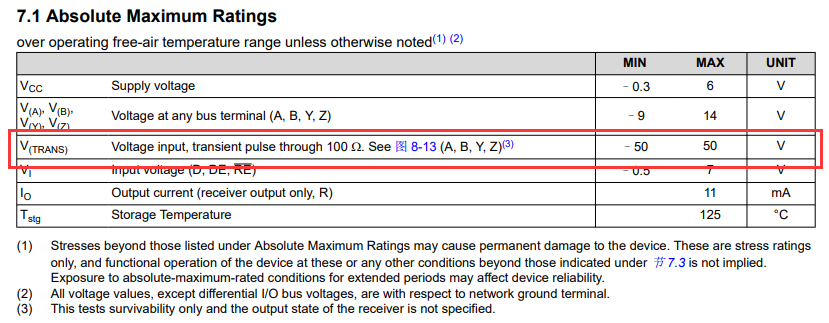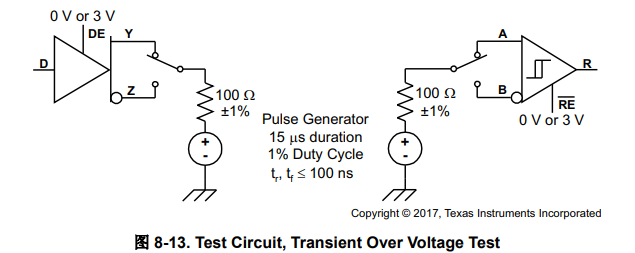Hi,
We use the SN65HVD33 for the RS232 interface, and end customer feedback to us there are more than 10pcs are damaged that the A/ B/ Z/ Y short circuit with GND,
we want to know that how to test the below highlight V(TRANS) that we can choose the TVS, and is there any promote testing equipment or institution, thanks?




